 From the Ten Year Anniversary Issue of Tail Fly Fishing Magazine: Ten Flies We should always have.
From the Ten Year Anniversary Issue of Tail Fly Fishing Magazine: Ten Flies We should always have.
by Joseph Ballarini
Tail Fly Fishing Magazine’s ten-year anniversary calls for something more extensive than a tutorial or pictures of destination boxes. So I’ve made a list of ten flies for ten years, and these selections should always be inside your fly box.
I’ve fished a lot of flies over the years, and I’ve also gained insight from thousands of anglers, hundreds of guides, and dozens of lodge owners. Over the last decade of publishing this magazine, I’ve pooled that information into an extensive meta analysis of fly success. Is it absolute? No. It’s simply a salty fly guy sharing ten years of his observations—and the observations and experiences of others—to try to make everyone’s fishing better.
I’m sure this list will generate debate and maybe a few arguments; I argued with myself while compiling it. I considered dozens of other flies. I didn’t include the EP Spawning Shrimp, Deceiver, Half and Half, Slider, M.O.E., Strong Arm Crab, or Aflexo. Nor did the Chernobyl Crab or Borski Slider make the cut—despite the fact Tim Borski was a major influence on my early fly tying.
You’ll likely have strong opinions about your own favorite producers, and we’d like to hear about it. Send us an email or letter, or follow our Instagram and Facebook pages to weigh in on our digital platforms.
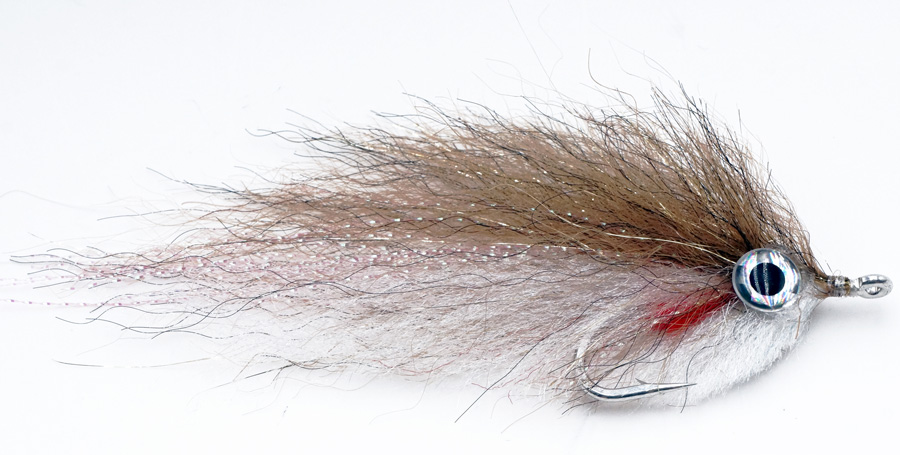
EP Peanut Butter
White EP Peanut Butter
If you aren’t familiar with Enrico Puglisi’s Peanut Butter, you either haven’t been fly fishing long or you’re not paying attention. It’s probably one of the most common baitfish patterns in use, sold by almost every fly shop, and has a profile that catches fish in both fresh and salt water. It’s lightweight and easy to cast, swims well, and can be tied in any color combination. I’ve used it to catch striped bass, peacock bass, bluefish, mahi-mahi, marlin, tarpon, redfish, and snook, as well as various shark and trevally species. Solid white is the most versatile, fished as is, or colored with Sharpies to mimic local prey. Other favorite colors are black and purple, and the white belly with blue, green, or tan on top.
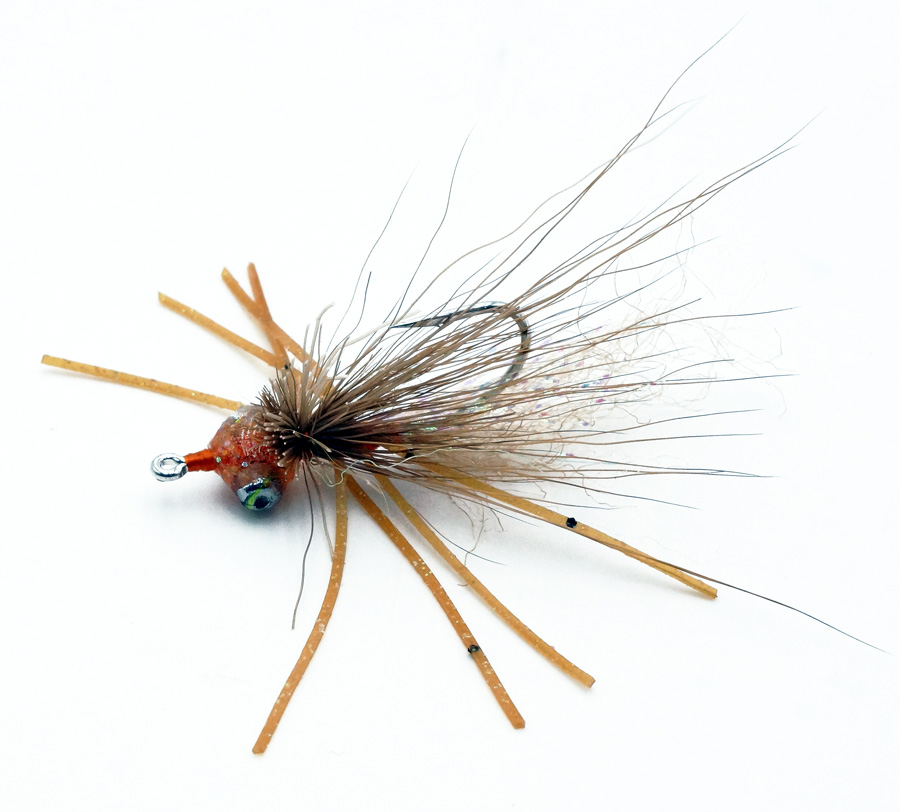
Pop’s Bonefish Bitter’s
Pop’s Bonefish Bitters
Pop’s Bitters is a time-tested and proven flats fly. It’s a little crabby and a little shrimpy, which is why both bonefish and permit like it. It’s a great pattern for Turneffe in Belize and is comparable to the crab named after the atoll. They’re similar—both have a small tuft of deer hair, a design element that usually makes them land hook up—but one slight difference gives the edge to the Bitters—the little bead of epoxy on the body/head gives the fly additional weight, more effectively getting it to the bottom. The Bitters also lands slightly softer, and I like the way it wobbles as it makes little sand puffs with each bounce. You can take permit, bones, and even redfish on it, and it’s also great for triggerfish and sheepshead.

Veverka’s Mantis Shrimp
Veverka’s Mantis Shrimp
I interviewed the late Bob Veverka about nine years ago and asked him about his most widely known fly; his answer kind of surprised me. I’m paraphrasing, but he basically said that he didn’t like tying a bunch of shrimp variations and just wanted one that would work everywhere. He also laughed and said it was just luck. Anyone who has ever fished for bonefish has probably used his Mantis. It’s usually the first fly that a guide will select from your box. Permit eat it, too. I’ve taken bonefish on three continents with it, and it’s usually the first fly that I’ll try on flats in new destinations. I’ve caught fish with it in Indonesia, Maldives, and Australia—on unknown flats, without a guide. Ververka’s shrimp is lightweight, lands softly, and fish go crazy for the front-focused rubber legs. My favorite variation is the “ghost” version, a very light tan with light barring.
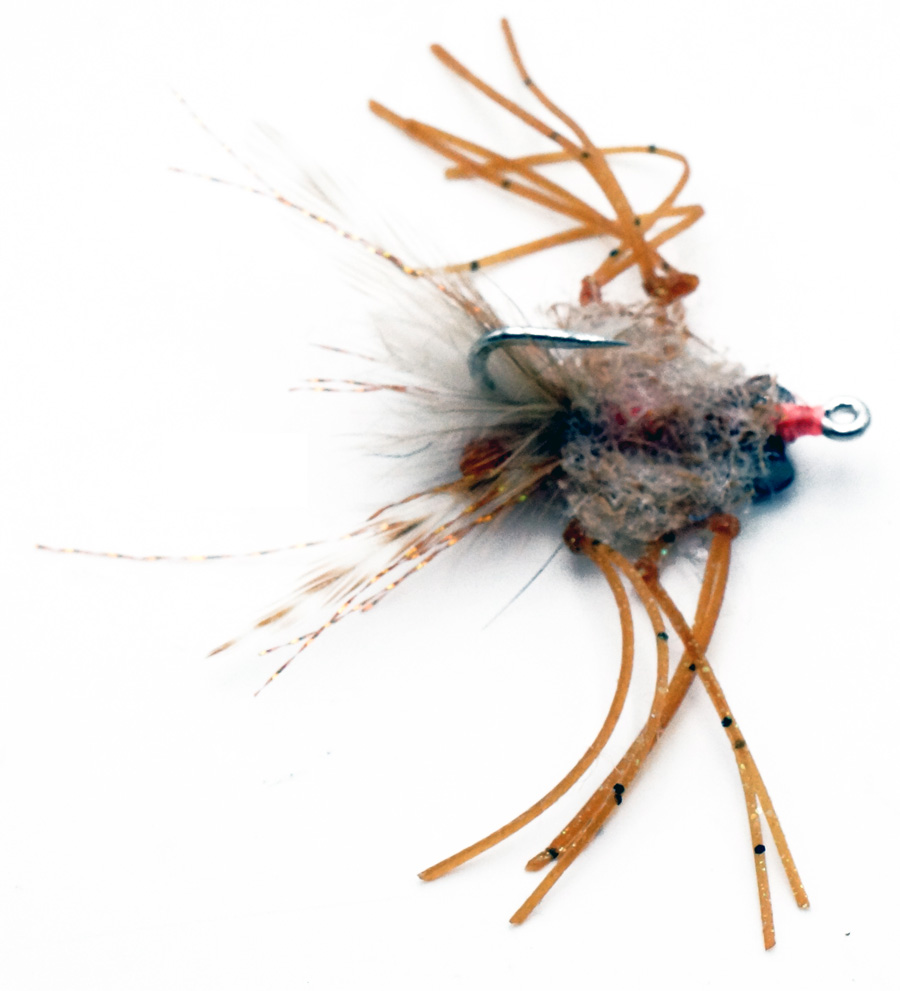
The raghead crab
Raghead Crab
I hate crab flies. I tie them because they’re necessary, and because managing editor Trey Reid almost exclusively fishes them for permit. The Raghead edged out the Chernobyl Crab and the Merkin mainly because it’s so popular in Belize and Mexico. If you show up without a selection of Ragheads in your box, your guide won’t be happy. The Raghead gets the edge based on its natural materials, including marabou, which makes everything better. You can’t effectively strip crabs—the reason for my disdain—so the fly has to move when it’s stationary. But even when it’s static, the Raghead’s puffy marabou tail (the head of the crab but the tail of the fly) sways and undulates, which is likely why they’re the most common selection—and one of the biggest producers—for Caribbean permit.
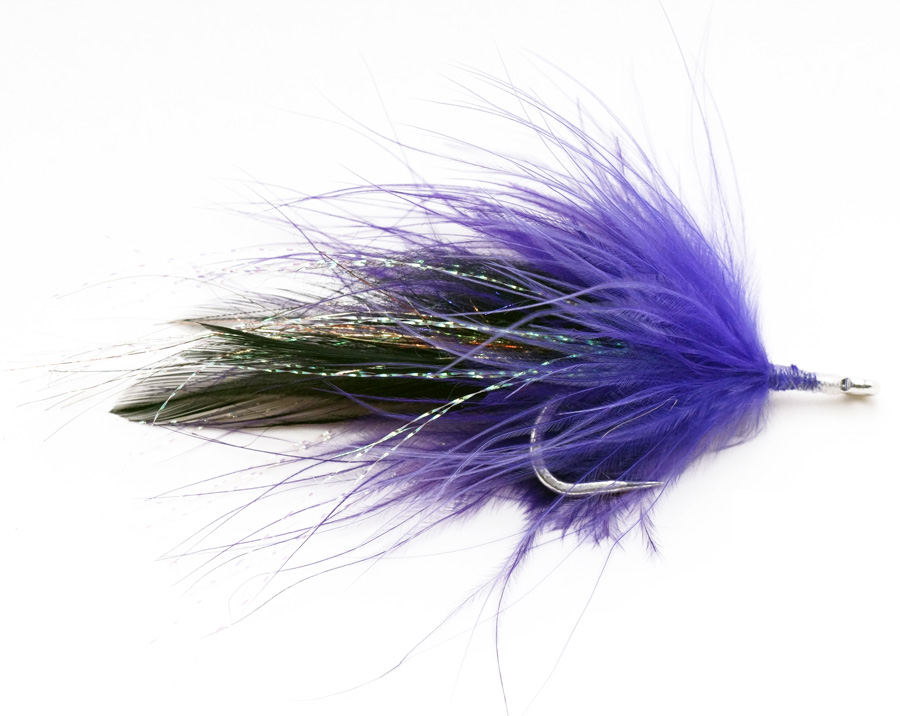
Chico’s Marabou Madness
Marabou Madness
Speaking of marabou, Chico Fernandez’s Marabou Madness is another incredibly versatile pattern. It’s a simple fly made entirely of marabou with a couple of strands of gold flash. It’s the marabou version of the Clouser Minnow and EP Peanut Butter—versatile, productive, easy to tie and cast. It undulates in the water when stationary and will take tarpon, snook, and tripletail. I’ve also used a tan version to hook bonefish and a blue-and-white version for trevally, but my go-to colors are black and purple. I’ve always assumed the flash added detail, so while recently fishing with Chico, who was throwing a Madness for snook at Ascension Bay, I asked him about it. “I just like it,” he said, looking over his shoulder from the bow and grinning widely. “It serves no real purpose.” Then he turned around and made another cast.
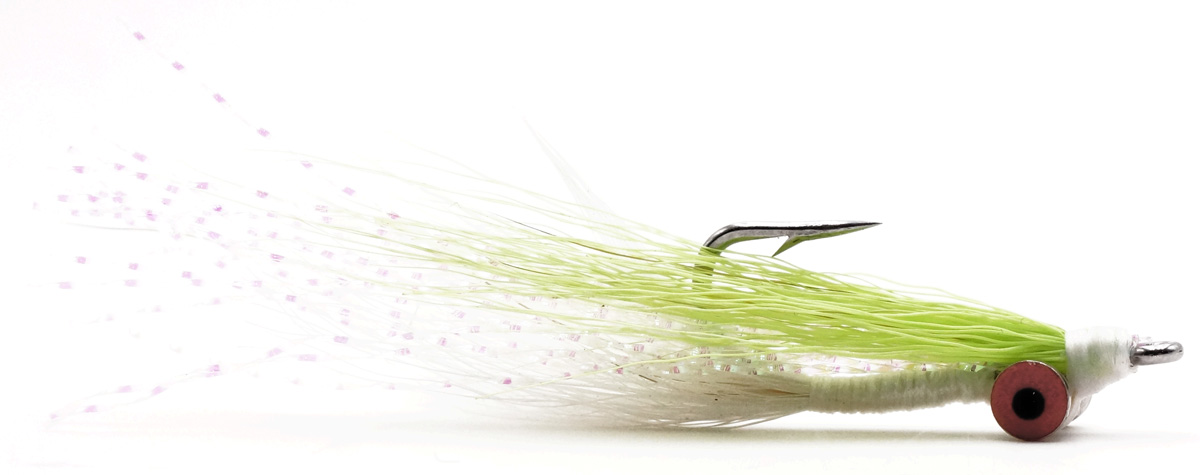
The Clouser Minnow
Clouser Minnow
My home state of Pennsylvania has made many iconic contributions to culture. One area in central PA has given us Hershey Bars, York Peppermint Patties, Auntie Anne’s Pretzels … and Bob Clouser. The Clouser Minnow is the undisputed heavyweight champion of flies. It’s arguably the most productive fly in history and can be used successfully on almost every species. Not having Clousers in your box is like not having line on your reel. Enough said.
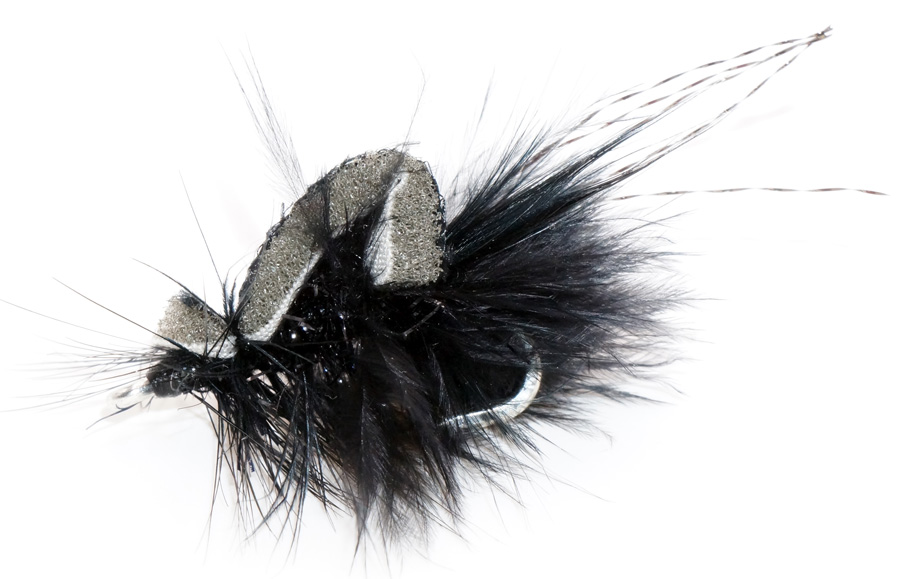
the Gurgler
Gartside Gurgler
The Gartside Gurgler, developed by Jack Gartside in 1988 for striped bass in Massachusetts, is the quintessential topwater fly. According to legend, Gartside’s original intent was creating a variation of a grasshopper or beetle fly for trout. But its effectiveness on striped bass couldn’t be ignored, and although it’s still useful for many freshwater species, its versatility has made it an integral part of the saltwater fly arsenal. Unlike a popper, the slow-strip retrieve often employed with the Gurgler can mimic shrimp, squid, baitfish, and worms. It can be tied in varying sizes and colors, and varying the tail’s length changes its appearance and action for different presentations. I tie it with a marabou tail, exaggerate the big fold of foam body, and minimize the lip at the hook eye for smoother movement.
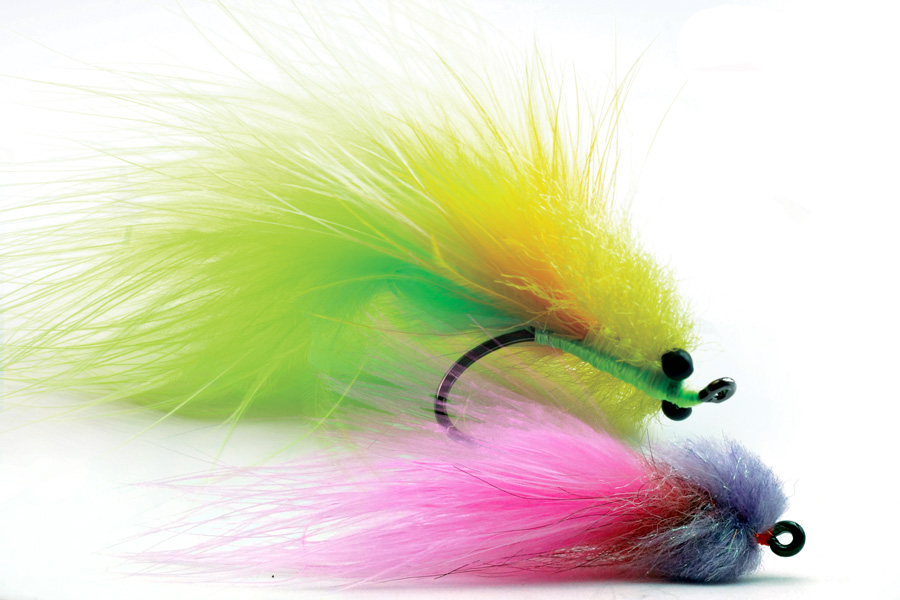
Gary Merriman’s Tarpon Toad
Tarpon Toad
Gary Merriman’s Tarpon Toad is the fly that led Andy Mill to five Gold Cup Tarpon Tournament wins, cementing his legend in tarpon fly fishing. He still uses them today, and so do a lot of other people. The Toad has taken more tarpon in more places than any tarpon fly in my box. It originally was tied with a bunny strip, but that can get heavy to cast and land hard when wet. Today, both Merriman and Mill prefer the marabou tail, although the rabbit strip is still common, and most commercially produced Toads use the bunny strip. It catches fish everywhere: open water, mangroves, stained water, clear water. It can be tied in various color combinations to mimic shrimp, baitfish, worms, juvenile squid, and jellyfish.

Peterson’s Spawning Shrimp
Peterson’s Spawning Shrimp
This is one of my all-time favorite flies and a terrific example of how natural materials and inherent movement can create magic. It’s one of three flies that I use in unexplored or unknown destinations. It’s also my favorite shrimp pattern to tie (and the front half of my own Evolution Shrimp). Design is the key to this producer. The action comes mostly from the front portion, enhanced by the natural movement of the fur used for the top of the body. Like many flies on this list, it moves even when stationary. It’s great for bonefish and permit, but I also tie it on big long-shank hooks in lighter colors to use for striped bass and redfish—and for winter tarpon during shrimp runs. With bead chain or other lighter weights, its buoyant materials make it an intermediate fly that sits in the middle of the water column. I use foxtail for both the egg sac and tail, and either foxtail or rabbit for the body.
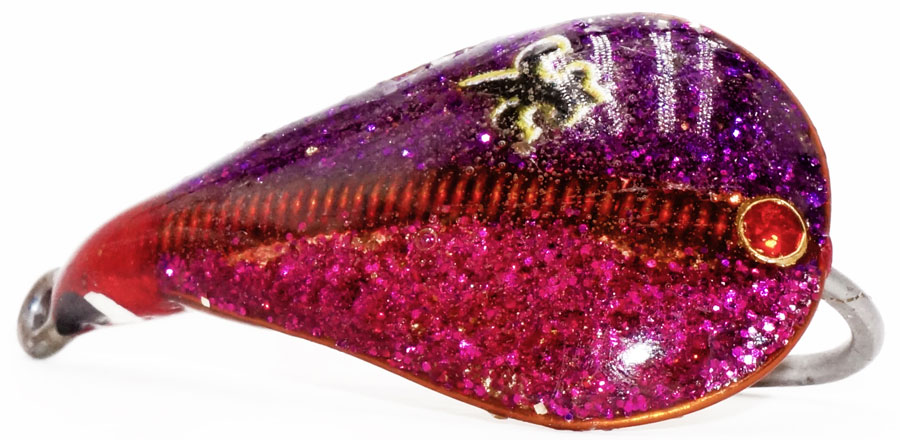
Waldner’s Spoon Fly
Spoon Fly
In my youth I used a conventional lure called a Kastmaster—a silver oblong ellipse, polished on both sides, with a trailing treble hook. It came in numerous sizes, and fancy versions came with a small clump of white bucktail on the treble. We used them like jerkbaits, reeling it both fast and slow, and something always tried to eat it. The Spoon fly, in my opinion, is the Kastmaster of the fly world. It sinks, it wobbles, and it does everything possible to get a fish’s attention. It’s a go-to fly for redfish along the Gulf Coast, but it’s also effective for northern species like striped bass and bluefish—as well as ambush predators like snook and jacks. The wobble mimics a wounded baitfish when stripped fast and erratically, and it looks crabby when stripped slow.
The Spoon is what I reach for when they aren’t eating anything else, regardless of location or species.

